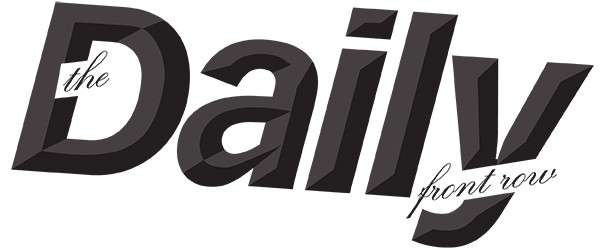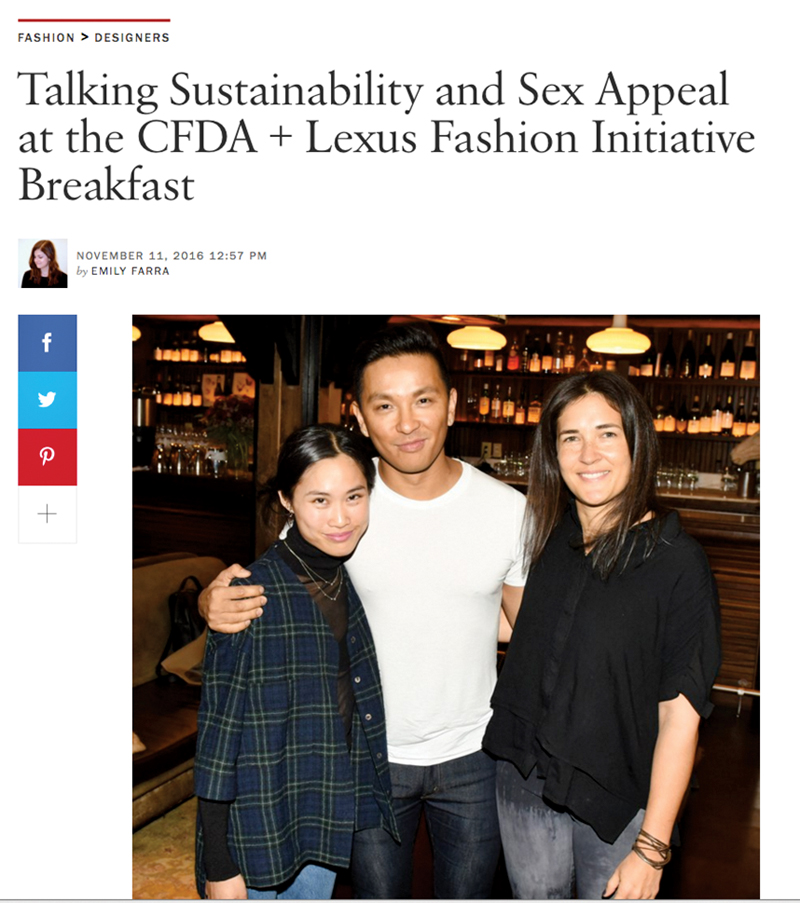As Vogue’s digital creative director, Sally Singer has spearheaded the creation of a vibrant, provocative online home for the most iconic brand in fashion media. From captivating runway content to saucy first-person essays about politics, the boudoir, and more, vogue.com is expanding the brand’s universe for audiences all over the world. From her office at 1WTC, Singer explains the vision.
Vogue.com’s subject matter seems to be more millennial-focused and broader that what we see in the magazine. How do you explain the audience?
Well, we know that a significant portion of our audience is digital-only, but it doesn’t skew younger than the print, in any way. It’s just a different door into the world of Vogue. I don’t think of online as more millennial, I think of it as an absolute essential amplification of what Vogue does. I’ve always seen Vogue, in its print form, as covering the arts and politics and culture and sociology, and being as well the magazine of record for fashion in English. Online, we cover all those same verticals, but to the tune of 70 to 110 posts a day.
How is your staff integrated with the print team?
Everyone is helping out on everything; digital writers are now writing for the print magazine, and the print editors also write for digital.
That’s not the case at some publishing companies. What are the primary advantages of Vogue’s approach?
Vogue is not strictly a journalistic project. Vogue is a massive cultural institution that does lots of different things in the world. It does no one any good to be siloed. I can’t imagine what that would be like. Everything Vogue does has to be nuanced and exquisite and thoughtful about the world. It doesn’t always have to be beautiful, because the world isn’t always beautiful, but it has to be thoughtful.
It’s interesting to see the gutsy side of Vogue’s personality play itself out a bit more online — your sex coverage, your political coverage… what excites you about that?
Karley Sciortino was probably the first online columnist that we hired when I came back [to Vogue after a two-year stint editing The New York Times Style Magazine]. Karley is a cool girl: She’s smart and funny, and her column might start with a very cheeky headline: “Would you sleep with a Republican?” I think was one recently. But she’s essentially asking a deeper question: How important are your worldview and ethics in your sex life? Her entry point is humor, and that humor is right for the digital age, I think, without ever crossing any sort of line.
We don’t aggregate, and we’re not following other people’s newsfeeds — we’re in tune with the rhythm of the Internet and the discussions that are going on, but we’re not beholden to them. There are points we don’t have to make, and if we’re going to bother to say something, we better have something to say. I value original reporting. In October, we had people covering Standing Rock for nearly two weeks. We have credibility in that argument, because we sent a team of three people there to report when not a lot of reporters were there. But that’s very Vogue — American Vogue has a history of trying to be where things are happening. Joan Didion wrote for American Vogue, Lee Miller covered the war….
We’re living in an unprecedented time, politically speaking. How are you approaching it?
We’re approaching it as it unfolds. We sent teams to both the Democratic and Republican conventions. We covered the inauguration and the [Women’s] March with probably an equal number of posts. Every day and every hour, we watch and write what feels right in that moment. It’s very intuitive; it’s always respectful. There’s no sarcasm or cheap humor. There’s not a place for that in Vogue. But obviously, there are issues that we firmly believe in and that we’ve been there for, like the Dakota Access Pipeline and issues around reproductive rights. We’ve been very, very strong on issues around gun control, even before the nightclub shooting in Orlando. Our staff stands by their principles and their ideals.
What’s the visual strategy?
I’ve always liked very in-your-face pictures, where people speak right to the camera and can be themselves. Fashion should empower you to be smarter and clearer. How does it allow you to get dressed in the morning so that instead of thinking about what you’re wearing, you’re thinking about the world? You’re not worrying if you got it right, because you know that you got it right. I’ve always liked images of fashion in its least precious aspects; in non-picture pictures.
That’s actually the history of American Vogue as done by Anna Wintour. Her first cover was Michaela Bercu in the street. It’s always been about, how can fashion costume a life that’s much bigger than fashion? It’s much more culturally, politically, and sociologically concerned. On the website and social streams, we have the ability to really play that up, because we can allow people to be themselves and speak their minds and show off their world without a lot of intervention or artifice.
Have show reviews become less important?
No. Integrating style.com into vogue.com was substantial, because style.com reviewed a vast number of shows, and we had to think about how much of that we were going to continue. As the publication of record for fashion in English, it was important for Vogue to retain the scale and depth of that coverage. As fashion has become more a part of mainstream culture, the ability to have a point of view or an edit on it is even more important.
What’s clickbait in the vogue.com universe?
I hope nothing. I think of clickbait as something that promises a headline and doesn’t deliver. Everything should deliver.
What are the most popular types of stories?
People endlessly love celebrity style and beauty, and they love access to a very extended world of style setters. And it doesn’t have to be women — when Tyler, The Creator has launched things or talked about his line with us, it’s been huge.
Vogue.com has done some really interesting offline experiences, like bringing Pat McGrath and her gold makeup to a park in Paris.
I’m really interested in how events in the real world — we call them “actual reality” — can be magical to those who are there, as well as magical online and in social media. How do you make something that’s kind of extraordinary, tell that story in every possible way, and then let the world tell it back to you?
From a business perspective, it’s difficult to monetize digital properties and social media. How do you see that evolving?
I see it evolving as everyone else sees it evolving. Everyone is just watching and waiting and seeing.
And hoping!
Reading behaviors are changing, content behaviors are changing. That’s the great challenge of the Internet — how do you get people to understand that great content is worth something? Ask musicians, ask filmmakers — literally, ask anyone in the arts right now. This is the problem the Interweb has not solved.
Well, The New York Times gives us reason to hope.
Yeah, it does. But with a vast investment to get those results. They’ve done it well, for a long time.
Can you give us a sense how the site has grown under your leadership?
A lot. There have been two things that have happened that have probably shifted the numbers: One, we redesigned the site in the first year or so that I was here. When it was built, it was very much like a beautiful digital representation of the print edition. We built a site that was much more about UX and UI capabilities and the flow for the reader. And then adding Vogue Runway certainly grew our global authority. When I started [in this role], I don’t even know if we had 300 followers on Instagram. It’s been a huge platform shift and partnership for us.
How is Vogue celebrating its 125th anniversary?
We’re starting the celebration of it with the March issue; there are a large number of special collaborations and initiatives. They tend to be things that have a lasting value and grow into larger things; they should move Vogue forward. Some involve philanthropy and women of accomplishment. There is now a rose named Vogue. Digitally, we have an incredible archive that we play with all the time to illustrate our stories. We have much more happening with it this year, from mini videos to looking back at our cover girls and having designers talk about their first fashion moments.
Magazine-affiliated websites aside, what are some of your favorite digital brands or destinations?
Well, in my house, it’s going to end up being FreshDirect. I spend most of my time ordering groceries for my three sons, who eat everything in sight. I probably could not live without FreshDirect, which is terrible but true. Although they should diminish their packaging. Other than FreshDirect, I do get the Times in print and online and I read The Guardian online. I like live music, so BrooklynVegan is pretty important when I’m looking for tickets for upcoming shows.
What’s the best show you’ve seen lately?
So many. Immediately everything I didn’t like has come to mind. Seu Jorge’s show at Town Hall was extraordinary — he did the David Bowie covers that were in The Life Aquatic.
Do you still ride your bike to work?
Yeah.
How’s the commute?
It’s fine. It’s along the West Side Highway; it suits, it’s a bike path. I mean, I could gripe about it, but it’s much better than riding up Eighth Avenue.
The Sally Singer on Instagram is decidedly not you. Do you have a secret account?
No.
Why is that?
Because I feel like I have so many social media accounts here, I don’t need to have social media for myself. I have no social media accounts at all, secret or nonsecret. I don’t need to construct myself online. This is what I do.
Read the issue HERE.



